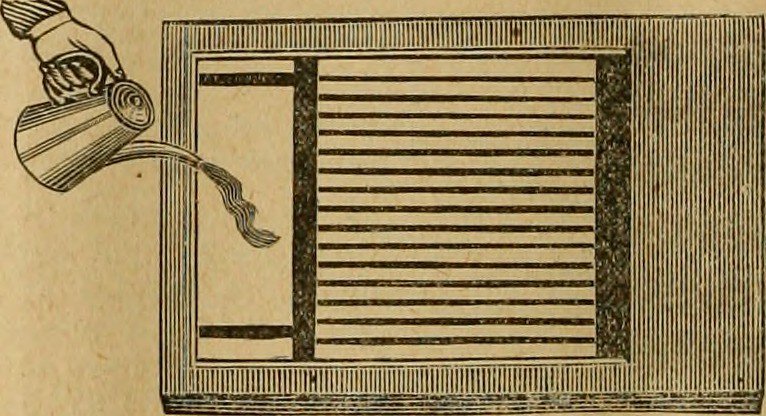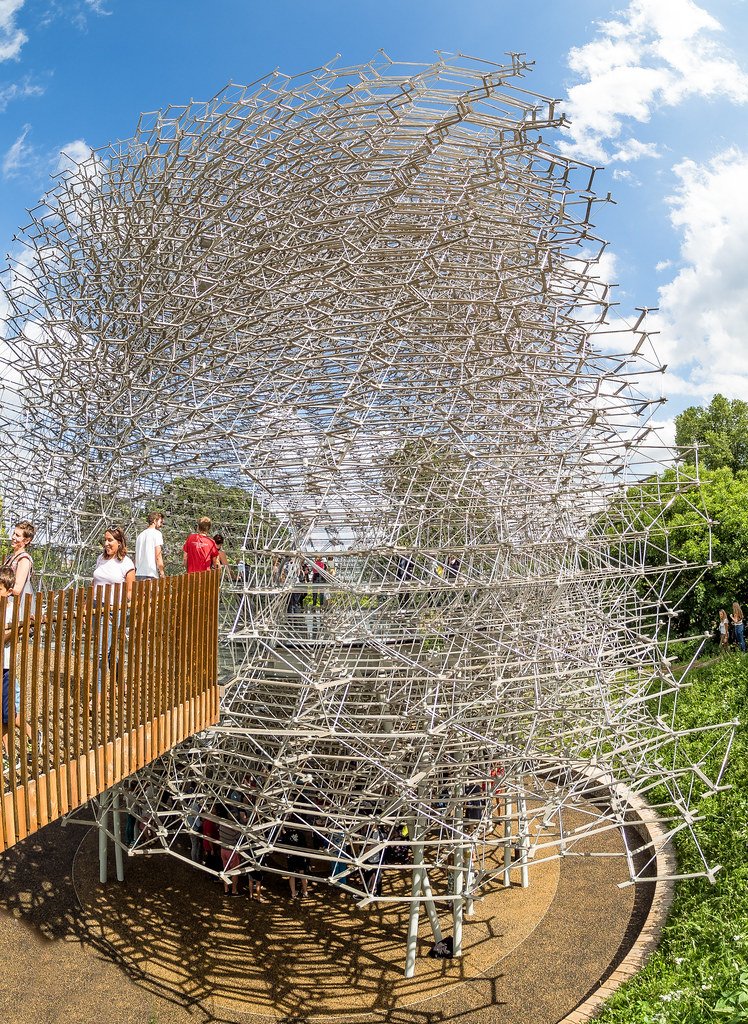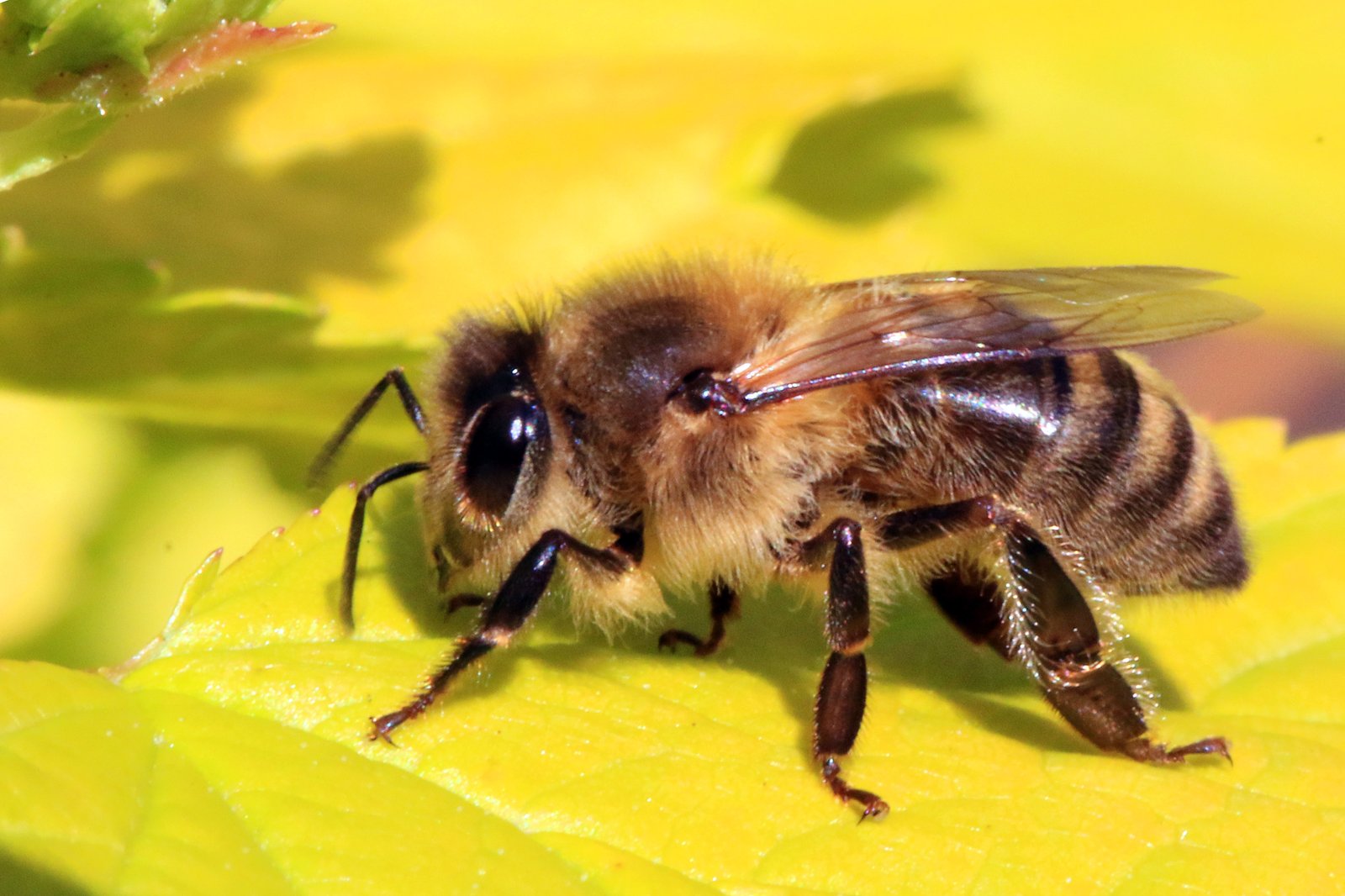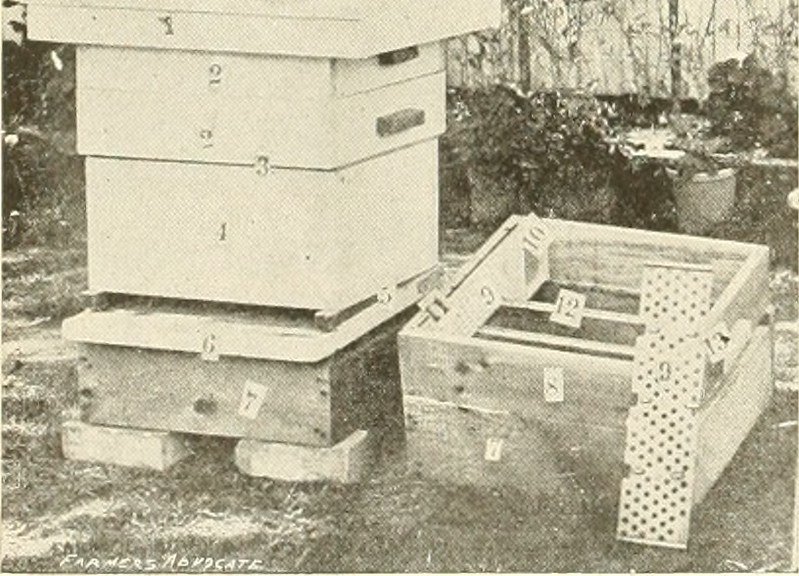Picture a serene meadow, bathed in golden sunlight with flowers swaying gently in the breeze. In this idyllic scene, honeybees diligently go about their daily tasks, their fuzzy bodies buzzing with purpose. As they flit from flower to flower, these tiny creatures play a crucial role in our ecosystem, diligently pollinating plants and facilitating the production of our favorite fruits and vegetables. Yet, hidden within the confines of their hives lies a secret that is essential to their survival: ventilation. While often overlooked, proper hive ventilation proves to be a vital component in ensuring the health and well-being of these industrious insects. Let us delve into the intricate world of beekeeping, uncovering the significance of hive ventilation and its undeniable impact on the delicate balance of a bee colony.
Table of Contents
- The Importance of Hive Ventilation for Bee Health:
- – The Impact of Proper Ventilation on Hive Environment
- – Understanding the Benefits of Adequate Airflow for Bees
- – Practical Tips for Optimizing Hive Ventilation
- – Recognizing the Symptoms of Poor Ventilation in a Beehive
- – Enhancing the Well-being of Bees through Better Hive Ventilation
- Q&A
- Insights and Conclusions

The Importance of Hive Ventilation for Bee Health:
Bee health is dependent on a variety of factors, and one crucial aspect that often goes unnoticed is hive ventilation. Proper ventilation in a bee colony is essential for their overall well-being. It plays a vital role in maintaining the optimal living conditions inside the hive, ensuring the survival and productivity of the bees.
The benefits of hive ventilation for bee health:
- Regulating temperature: Ventilation helps regulate the temperature inside the hive. During the summer months, excessive heat can build up, causing stress to the bees and potentially damaging their brood. Adequate airflow allows excess heat to escape, keeping the hive cool and preventing overheating.
- Managing humidity: Bees produce moisture through their respiration and the evaporation of nectar. If the humidity levels rise too high inside the hive, it can lead to the growth of mold, mildew, and even detrimental diseases. Good ventilation helps maintain proper humidity levels, ensuring a healthy environment for the bees.
- Removing pollutants: Hive ventilation helps remove harmful gases, such as carbon dioxide, that can accumulate inside the hive due to respiration and combustion. It also aids in eliminating chemical fumes from pesticides that can unintentionally enter the hive, safeguarding the bees against potential toxicity.
- Preventing condensation: When warm air meets a cold surface, condensation occurs. Excessive condensation inside the hive can lead to dampness, which can be detrimental to bee health. Proper ventilation allows air to circulate, reducing the risk of condensation and maintaining a dry hive.
By prioritizing hive ventilation, beekeepers can create an environment that promotes the long-term health and productivity of their bees. Adequate airflow ensures a balanced microclimate, minimizes stress, and reduces the risk of diseases, ultimately contributing to the overall success of the hive.

– The Impact of Proper Ventilation on Hive Environment
The Impact of Proper Ventilation on Hive Environment
The well-being of honey bees in a hive is greatly influenced by the ventilation within the colony. Adequate airflow provides significant benefits to the hive, supporting various aspects of bee life. Let us delve into the crucial impacts that proper ventilation has on the hive environment:
- Temperature Regulation: Effective ventilation helps regulate the hive’s temperature, ensuring it stays within the optimal range for bee health. As bees generate heat from their activities, ventilation allows excess heat to escape during warm conditions, preventing the hive from overheating. Similarly, during cold periods, ventilation prevents excessive heat loss, maintaining a cozy environment for the colony.
- Moisture Control: Bees require a balanced level of humidity within their hive. Proper ventilation allows moisture to escape, reducing the risk of excess moisture buildup that could lead to fungal and bacterial growth. By maintaining the ideal moisture levels, ventilation contributes to overall hive hygiene and reduces the likelihood of diseases.
- Removal of Toxins: The proper exchange of air helps eliminate harmful gases and toxins from the hive. Bees produce carbon dioxide and various airborne pollutants during respiration and chemical processing activities. Efficient ventilation ensures the removal of these substances, promoting a cleaner and healthier environment for the honey bee population.
In conclusion, proper ventilation plays a vital role in creating a conducive environment for honey bees to thrive. By regulating temperature, controlling moisture, and eliminating toxins, ventilation significantly contributes to their overall well-being. Beekeepers must pay attention to ventilation management to support the health and productivity of their hives.

– Understanding the Benefits of Adequate Airflow for Bees
Bees, the diligent pollinators of our ecosystem, rely on adequate airflow for their survival and optimal productivity. Adequate airflow in beehives is crucial for maintaining a healthy and flourishing bee colony. Here, we delve into the fascinating benefits that airflow brings to these incredible creatures.
Improved Ventilation
Adequate airflow within beehives ensures improved ventilation, which plays a vital role in maintaining the overall health of the colony. Just like humans, bees require fresh air to thrive. Proper ventilation helps control humidity levels, prevent the buildup of excess moisture, and promote a well-regulated hive temperature. It allows bees to efficiently circulate air, reducing the risk of diseases and mold growth that can harm the colony.
Optimal Honey Production
When bees have the luxury of sufficient airflow, it positively impacts their honey production capabilities. Ventilation facilitates the process of drying nectar and transforming it into honey. Through proper airflow, bees can evenly distribute the moisture in the hive and expedite the evaporation of excess water from the nectar. This optimal airflow leads to higher honey yields and better quality honey for both the bees and beekeepers.
Increased Pollination Efficiency
Adequate airflow not only benefits the bees but also enhances their pollination efforts. Efficient airflow helps disperse the scent of flowers and pheromones released by other bees, attracting more pollinators and improving coordination within the colony. With improved communication and navigation, bees are better equipped to locate, collect pollen, and pollinate flowers effectively. The increased pollination efficiency contributes to healthier plant growth and, ultimately, a thriving ecosystem.

– Practical Tips for Optimizing Hive Ventilation
Practical Tips for Optimizing Hive Ventilation
Ensuring proper ventilation is key to maintaining a healthy hive and maximizing honey production. Here are some practical tips to optimize hive ventilation:
- 1. Entrance Redirection:
- 2. Ventilation Holes:
- 3. Screened Bottom Board:
- 4. Supers with Ventilated Inner Covers:
- 5. Don’t Overlook Hive Placement:
Redirecting the hive entrance can significantly improve ventilation. Placing the entrance facing away from prevailing winds can prevent cold drafts from entering the hive while still allowing fresh air to circulate.
Drilling small ventilation holes near the top of the hive allows excess heat and moisture to escape. This ensures a consistent internal temperature and prevents condensation, which can lead to mold and disease.
Using a screened or mesh bottom board enhances ventilation by allowing air to flow through the hive from the bottom. This helps regulate humidity levels and removes any debris or dead bees that have fallen through the screen.
Consider using supers with ventilated inner covers. These specially designed covers have openings that allow air to circulate between hive boxes.
Optimal hive placement plays a crucial role in ventilation. Avoid placing hives in direct sunlight, as excessive heat can build up and stifle proper airflow. Additionally, ensure there is adequate space between hives to allow for optimal air circulation.
In Summary:
Efficient hive ventilation is essential for a thriving bee colony. Implement these practical tips to optimize hive ventilation, ensuring the bees’ well-being and maximizing honey production. Remember, a well-ventilated hive is a happy hive!
– Recognizing the Symptoms of Poor Ventilation in a Beehive
Recognizing the Symptoms of Poor Ventilation in a Beehive
Ventilation is crucial for the health and productivity of a beehive. Poor ventilation can lead to a myriad of issues that could potentially harm the entire colony. By familiarizing yourself with the signs of inadequate airflow, you can take proactive measures to ensure the well-being of your buzzing companions.
Here are some key symptoms to look out for:
- Increased humidity: One noticeable indicator of poor ventilation is excessive moisture within the hive. If you observe a build-up of water droplets on the hive walls or frames, it indicates inadequate air circulation.
- Foul odor: A pungent, unpleasant smell emanating from the hive may be an indication of inadequate ventilation. The accumulation of waste products and gases can cause an offensive odor that should not be ignored.
- Bees congregating at the entrance: Watch out for a higher concentration of bees clinging to the hive entrance. This could be a sign of bees desperately seeking fresh air, as they are unable to find sufficient ventilation inside the hive.
- Decreased honey production: Poor ventilation can negatively impact honey production. Bees rely on proper airflow to maintain optimal hive temperature, work efficiently, and produce honey. If honey yields are significantly lower than usual, it could be an indication of ventilation problems.
By understanding these tell-tale signs, beekeepers can promptly address ventilation issues and implement necessary measures to improve the hive’s air circulation. Adequate ventilation ensures a healthy and thriving bee colony, enabling them to carry out their vital pollination role effectively.
– Enhancing the Well-being of Bees through Better Hive Ventilation
When it comes to caring for bees, their well-being and health are of utmost importance. One significant aspect of ensuring their overall welfare is by providing proper hive ventilation. Adequate ventilation plays a vital role in maintaining a suitable environment within the hive, promoting a healthy and thriving bee colony.
There are several benefits to enhancing hive ventilation. Firstly, it helps regulate the temperature inside the hive. Bees are extremely sensitive to heat, and excessive heat can be detrimental to their health. By improving ventilation, we can prevent the hive from overheating during scorching summer days, helping to keep the bees cool and comfortable.
- Better hive ventilation also aids in moisture control. Bees produce moisture as part of their hive activities, such as evaporating nectar to create honey. If the humidity levels inside the hive become too high, it can lead to issues like mold and mildew, which can be harmful to the bees. Adequate ventilation allows excess moisture to escape, ensuring a drier and healthier hive environment for the bees.
- Furthermore, ventilation helps to disperse noxious fumes. Bees rely on their sensitive sense of smell for various activities, such as locating nectar sources and detecting predators. Insufficient air circulation can result in the buildup of toxic gases emitted by pests or chemical substances, posing a threat to the bees’ overall well-being. Optimal hive ventilation enables these harmful fumes to dissipate, safeguarding the bees from potential harm.
- Lastly, proper hive ventilation aids in air exchange, allowing fresh oxygen to enter the hive and carbon dioxide to be expelled. Just like any other living organism, bees require a fresh and clean air supply to thrive. Good ventilation helps maintain a healthy balance of oxygen and carbon dioxide, contributing to the bees’ respiration and overall vitality.
By recognizing the importance of hive ventilation and implementing appropriate measures to enhance it, we can contribute to the well-being and longevity of our buzzing friends. Let’s prioritize their health by ensuring adequate airflow, temperature regulation, moisture control, and the dispersal of harmful gases within their hives.
Q&A
Why is hive ventilation important for bee health?
Proper hive ventilation is crucial for bee health as it helps regulate temperature, humidity, and air quality inside the hive. It also helps remove excess moisture, prevent the buildup of harmful gases, and control the spread of diseases.
How does poor hive ventilation impact bees?
A lack of proper hive ventilation can result in various issues. Bees may suffer from heat stress, dehydration, and increased susceptibility to diseases. Additionally, the accumulation of moisture and gases can lead to mold growth and a decline in overall hive hygiene.
What are the signs of inadequate hive ventilation?
Signs of poor hive ventilation include bees fanning their wings excessively, clustering outside the hive on hot days, increased bearding, and a strong, unpleasant odor emanating from the hive. These signs indicate that bees are struggling to maintain a comfortable and healthy environment inside their hive.
How can beekeepers ensure sufficient hive ventilation?
Beekeepers can promote good hive ventilation by providing their hives with proper ventilation equipment such as screened bottom boards, top entrances, and ventilation boxes. Regular hive inspections and monitoring of temperature and humidity levels can also help identify and address any ventilation issues.
Are there any natural ways to improve hive ventilation?
Yes, there are natural ways to enhance hive ventilation. Placing hives in a location with ample shade and airflow can help regulate temperature and reduce the need for artificial ventilation. Planting windbreaks and providing adequate hive spacing also promote natural air circulation.
Can excessive ventilation be detrimental to bees?
While adequate ventilation is essential, excessive airflow can be detrimental to bees, especially during winter months. It can cause the hive to lose valuable heat, leading to increased stress and energy consumption for the bees. Beekeepers should strive for a balance between ventilation and maintaining a warm hive environment.
What are the benefits of proper hive ventilation for honey production?
Proper hive ventilation positively impacts honey production. Maintaining optimal temperature and humidity levels in the hive encourages foraging activity, supports brood development, and reduces the risk of diseases. These factors ultimately contribute to healthier and more productive colonies, resulting in increased honey yields.
Insights and Conclusions
In conclusion, as we delve into the fascinating world of hive ventilation, we come to appreciate the critical role this intricate system plays in safeguarding the health and well-being of our tiny buzzing friends. Through a delicate dance of airflow, temperature control, and moisture regulation, bees demonstrate their remarkable resilience and adaptability, ultimately creating an environment optimized for their survival.
With a symphony of wings fanning, bees tirelessly curate the air quality within their hives, promoting circulation and removing excess heat. Their sophisticated ventilation strategy not only ensures a cozy home for the colony, but also prevents the growth of harmful pathogens that thrive in stagnant environments. By maintaining optimal hive conditions, these industrious creatures nurture their brood, establish healthier immunity, and thrive in harmony.
Moreover, hive ventilation plays a profound role in mitigating excessive moisture, a common enemy in beekeeping. By employing ingenious measures to regulate humidity, bees fend off moisture-related diseases, such as dreaded chalkbrood, that can decimate entire colonies. Constant vigilance and intricate architectural design combine to create a hive environment that fosters optimal air and moisture balance, safeguarding bee health and vitality.
It is imperative for beekeepers and enthusiasts alike to understand and appreciate the significance of hive ventilation, for it is through this knowledge that we can truly support the well-being of our precious pollinators. By providing adequate airflow, ensuring proper hive design, and recognizing the delicate balance of temperature and humidity, we can empower bees to thrive and continue their indispensable role in maintaining the delicate balance of our ecosystems.
In this enchanting journey through the hives, we unveil the remarkable ingenuity of our winged companions, shedding light on the intricate mechanisms employed to preserve their health. Let us embrace the wonders of hive ventilation, for it is a testament to the beauty and resilience of nature—a reminder that even the smallest creatures have mastered the art of creating harmonious and thriving homes. In doing so, we can contribute to their well-being and ensure the buzz of life echoes throughout our world for generations to come.
As an affiliate, my content may feature links to products I personally use and recommend. By taking action, like subscribing or making a purchase, you’ll be supporting my work and fueling my taco cravings at the same time. Win-win, right?
Want to read more? Check out our Affiliate Disclosure page.